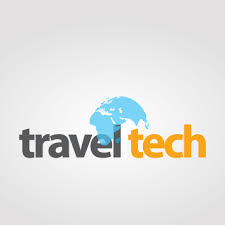The travel industry is booming. As of February 2019, it was the second-fastest growing sector in the world, ahead of healthcare, information technology and financial services. There are a number of reasons for this. Millennials are growing in purchasing power—by 2020 their spending in the US alone will total $1.4 trillion annually—and already they spend $5,000 more per year on holidays than any other generation. They also take around 35 days of holiday per year on average.
But the rise of budget airlines has also democratised travel: the Guardianreported in July that at one point in time, you could fly from London Stansted to Düsseldorf for just £7.99—less than a day’s commute in London. This marriage of lower-cost travel and higher-earning young people could only mean one thing: more city breaks, more beach holidays, and, more generally, more trips abroad.
Not every travel company is benefitting. Thomas Cook went into liquidation after failing to raise fresh funding. It’s a stark reminder of how digital is changing the playing field, and how there are some that have been left behind by a high street in transition.
Marketers are acutely aware of the power of digital in the travel world. In 2018, the revenue in the segment of online booking in travelling exceeded $92.5 million, and 41 percent of business and 60 percent of leisure travel arrangements are now made online. In a recent whitepaperwe came across some striking data about travel marketing: one study found that booking holiday accommodation—that’s just a room—involved an average of 45 different touch points over a 36-day period.
Through social listening, travel brands—airlines, hotels and more—can get real-time information about what customers are interested in and engaged with, and use that knowledge to make the products and services they offer them more personalised, and therefore more effective. One really good example of this is the @HiltonSuggests account on Twitter: it’s a concierge-like service that answers traveller questions and gives them ideas.
Marketers who are part of this social listening ecosystem have an opportunity to gain an understanding of market trends and get feedback that can inform their strategy. There’s also a crisis communications benefit: brands subjected to criticism can involve themselves in those conversations as they’re ongoing, investigate the allegations and address them. Consider the case of Alton Towers: after the tragic Smiler roller-coaster disaster, CEO Nick Varney very quickly involved himself, took responsibility and apologised wholeheartedly to those affected.
For some years now there’s been a lot of talk about the ‘mobile-first’ revolution, and this gives brands the ability to reach audiences in an entirely new, conversational way. There are chatbots, but these have never quite hit the mark. What we’re seeing in their place is what Silicon Valley calls ‘conversational commerce’: brands such as Burberry, Estée Lauder and Tommy Hilfiger using chat platforms to interact with their customers and offer a far more personal experience. This return to good old-fashioned customer service, only in digital form, has real promise for travel brands. Though its current users are big names, it seems especially well-suited to smaller, challenger brands, and any that want to have a more intimate relationship with their customers and potential customers.
Personalisation more generally is essential in the travel industry (after all, it’s the people that really make holidays special). 90% of travellers worldwide say that the standard travelling process is not enough any longer, and a personalised approach is viewed more as an expectation.That’s why influencers and micro-influencers—people who can speak on behalf of the brand—should be a major part of your strategy. And so too should SEO and voice search: you need to make sure your content is searchable by voice-activated devices, from Amazon’s Alexa to Siri.
Good travel marketing is not about churning out massive articles. It’s about drip-feeding useful and inspiring content to your audience. Where can you find the best sarnie in Soho? What’s the best underground music venue in New York? Creating these micro-moments should be at the heart of your approach to content.
But brands should also consider how they can take advantage of new forms of technology to make their content resonate with their target audience. Google, for instance, are about to bring out a new, augmented reality map, so brands should be asking themselves how they can take advantage. AR, as well as VR and forms of technology we can’t even imagine yet, will only become more enmeshed in our daily lives as we move forward. Brands should get into the habit of thinking about how they can make their work more interesting and accessible using modern tech.
Digital is a huge area, and imaginative marketers can constantly find new ways of taking advantage of the opportunities it presents to brands. There’s often scope for collaboration—we’ve partnered up with travel media market leaders INK—but there are also great ways to use AI and machine learning, and chances to make bite-sized, evocative video content that emotionally brings the holiday to the viewer.
Whatever digital brand strategy you use, what’s most important is to think of it holistically, as an integrated proposition. Lastly, you should always, always use social-listening to gain those valuable insights into what you’re doing, as well as to learn more about what your audience really wants.

